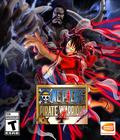With the lone exception of last month's leak in France, Microsoft has been doing a pretty good job of keeping Halo 3: ODST under wraps. But not everything can remain secret forever. The curtain was pulled back last week when reps from Microsoft and Bungie stopped by to let us check out a new campaign mission. Unlike most previews, we weren't playing early code — this was the final, retail build that you'll be able to buy in stores in a few weeks.
Set just before the events of Halo 3, Halo 3: ODST tells a side story in the Halo universe. There's no Master Chief and no Spartans, but that doesn't mean the game is any less a Halo title. From what we saw in our limited time with the game, Halo 3: ODST fits right in with the Halo universe. With its focus on an entire squad of playable characters, Halo 3: ODST just might be the most story-driven game in the franchise yet.
Playing as the nameless Rookie in an ODST squad, you are sent to New Mombasa in the middle of a Covenant attack in order to complete a secret mission for a superior officer. Like good troops no one questions orders, but as you drop into the city a Covenant ship jumps out and knocks out your pod's systems. Six hours later you're on the ground, disoriented and completely out of touch with your squad. It's up to you to find out what happened, both to your squadmates and to the city.
Because you're not playing as Master Chief, the experience as an ODST is somewhat different than standard Halo. For one, you actually have a life bar now, and it doesn't automatically regenerate. There is a small shield, referred to as stamina in-game, that will absorb limited damage and does have the ability to regenerate, but once your stamina shield is down, your core health gets hit. The only way to restore health is to find a medkit pickup.
While it may not seem like much, this one little tweak changes a core element of gameplay. You can no longer just run into danger willy-nilly, expecting to take damage and then hide for a few seconds to re-engage with full health. Do that here and it'll work the first time, but instead of full health you'll end up with half a life bar and a full stamina shield. Try it a second time, and there's a good chance you'll be dead. As a result, ODST players are forced to think and act a bit more tactically.
As you explore the streets of New Mombasa as the Rookie, you are searching for clues that will reveal the location of your squad and clues that reveal the backstory behind the game. The former bits are somewhat easy to find, as they show up on your map as points of interest, while the latter are hidden throughout the map. You don't need to discover the full history of the city to complete the game, but the couple that we ran across did pique our curiosity. We're looking forward to searching out more of these once we get our review copies in hand.
One of the nice things about the initial set of missions is that you can play through them in nearly any order you choose. When you arrive at a point of interest and investigate the obligatory clue, the game switches to a playable flashback sequence. In this way, you not only learn about the exploits of your squad, but you also get to experience it all firsthand. By the time you finish the game, you'll have played at least one mission as every member of the squad.
For our preview, we chose to explore the NMPD HQ. This mission partnered us up with Buck, the squad leader. Played with gusto by Nathan Fillion, Buck could be the twin brother of Captain Malcolm Reynolds from "Firefly." Fillion imbues the character with the same sense of smartass heroism that he put to masterful use in "Firefly" and "Serenity." Playing alongside him, the random quips that he spits out were spot-on hilarious. At one point, he even yelled at us for "stealing" one of his kills. If the NMPD HQ mission is any indication, Fillion's character is going to be one of the high points of the game.
Since the NMPD HQ is based in a skyscraper, the mission starts on a landing pad high above the city. Playing as Romeo, one of the ODSTs, we began the mission with a sniper rifle and a standard-issue gun as the secondary weapon. The goal here was to progress to a landing pad to meet up with other marines and dispatch any Covenant forces that got in the way. Level design wove through the skyscrapers but didn't spend an inordinate amount of time inside. Most of the level was actually outdoors, played in courtyards that connected to landing pads, which made convenient Covenant reinforcement spots.
While the overall design of the NMPD HQ level was fairly linear, the level wasn't without its side passages. There were a number of shortcuts and crisscrossing tunnels throughout, which made it easy to backtrack in order to flank an enemy. The semi-open design also presented us with numerous opportunities to use the sniper rifle. No complaints on that one.
We finished the level with a massive firefight on a construction platform. There was no boss, per se, but we did have to fend off waves of incoming Banshees as well as fight Covenant troops who landed on the rooftop and rushed our position. Playing on Heroic difficulty, the Covenant forces presented a well-balanced challenge. They weren't overpowered but they also weren't a cakewalk. By the same token, Buck and the other AI characters by our side didn't need any special care.
From what we could gather, it appeared as if it was impossible for Buck to die while under AI control, but his effectiveness seemed to depend on our willingness to get into the fight. For example, if we cowered and hid, Buck would annoy the Covenant but wouldn't end up taking them out. If we got out there and started eliminating Covenant, then Buck would do the same. It seemed to be a nice balance that rewarded the player for being an effective fighter without forcing you to play babysitter.
Weapon-wise, we got the chance to try out the standard space marine weaponry as well as a few of the Covenant weapons. If they drop it, you can pick it up, so there was plenty of variety in armament. Like prior Halo games, the Covenant have energy shielding so it's a good idea to carry a standard gun as well as a plasma gun. Use the plasma to sap the shield and then kill them with old-fashioned bullets. Unlike Master Chief, an ODST cannot dual-wield. You can carry two weapons, but you can only fire one at a time.
One of the biggest differences between an ODST and Master Chief is the ODST's enhanced battle visor. The visor has the ability to highlight enemies as well as increase the brightness in an area. On the upside, this makes it easy to see in the dark and target opponents on the battlefield. On the downside, it can be somewhat difficult to use whenever you're outdoors in the daytime, as it brightens all light. As a result, you can't use it all the time, but it sure does come in handy when you can.
After finishing the mission, we found ourselves back on the streets of New Mombasa, once again playing as the Rookie. With limited preview time, we decided to switch gears and take a quick look at the three new Halo 3 multiplayer maps. Halo 3: ODST comes bundled with a second disc that contains the entire Halo 3 multiplayer experience. It's basically Halo 3 plus all of the pre-existing map packs plus three new maps, minus the single-player campaign. Put in the disc, and you can play any Halo 3 map in any mode with any Halo 3 player who has the same map.
The first map we played was Citadel, a small map in a high-tech military base. The cramped quarters meant that kills were racking up left and right even though we only had eight players in the game. Perhaps the biggest surprise was realizing that we were once again playing as a Spartan and didn't have use of the ODST visor. After playing with the visor for almost two hours, going without it was a noticeable change.
We then moved on to Heretic, a mid-sized Covenant ship. It felt like there was a bit more room to move around here, even if the action didn't slow down. Despite being on multiple levels, some well-placed lifts ensured that there were no good camping spots. Staying alive here meant constantly moving. Finally, there was Longshore. Set in a port warehouse, this was the biggest map of the three and felt ideally suited for Capture the Flag, as the two bases were separated by a multi-level building.
And then, our time with Halo 3: ODST was over. Despite only seeing a small part of the game, what we did see was well-polished and quite promising. The new character of Buck also made quite the impression, thanks in no small part to Fillion's performance. We might be going out on a limb here, but we wouldn't be surprised if Buck becomes just as much a fan favorite as Master Chief himself.
More articles about Halo 3: ODST










 Halo 3: ODST (Orbital Drop Shock Troopers) is a new chapter in the Halo saga that lets gamers experience events leading up to the epic story told in Halo 3 through the eyes of a new hero in the Halo universe. The stand-alone expansion extends the Halo 3 experience with hours of new campaign excursions and multiplayer gameplay.
Halo 3: ODST (Orbital Drop Shock Troopers) is a new chapter in the Halo saga that lets gamers experience events leading up to the epic story told in Halo 3 through the eyes of a new hero in the Halo universe. The stand-alone expansion extends the Halo 3 experience with hours of new campaign excursions and multiplayer gameplay.














































